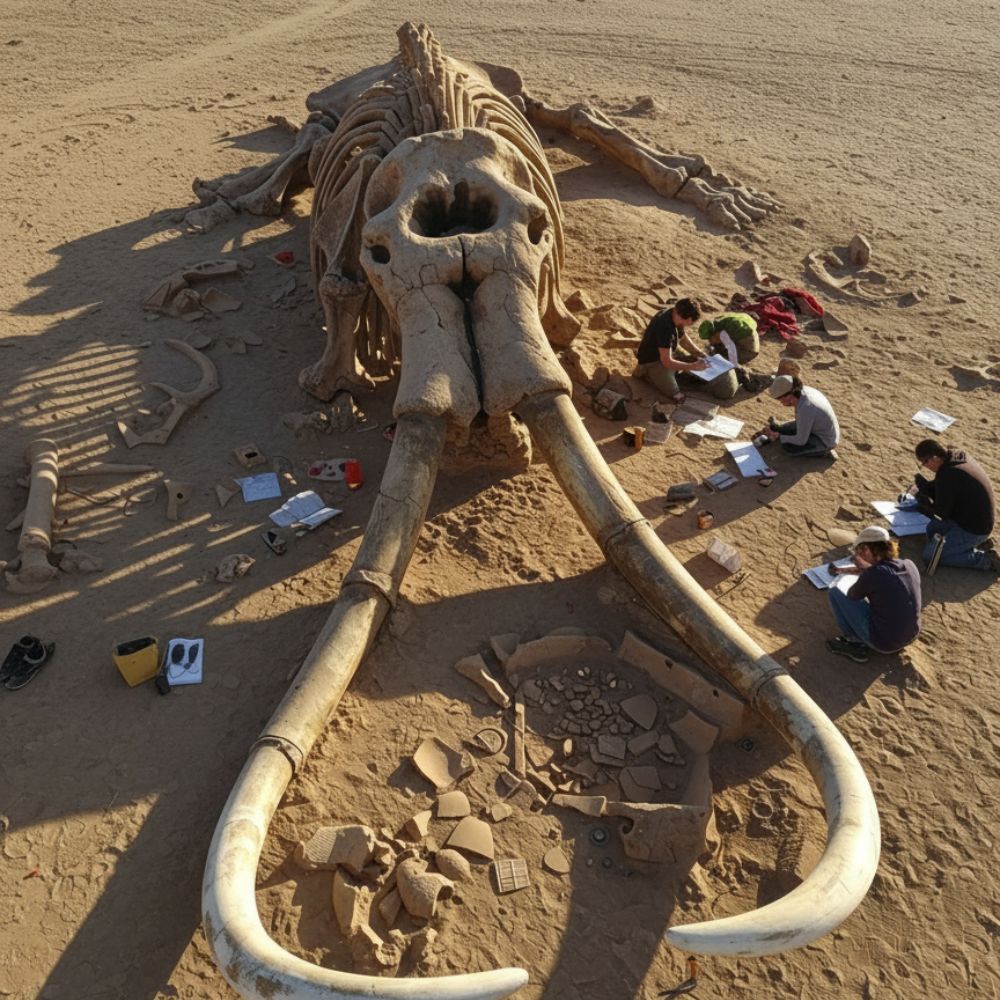Unearthing Giants: The Alashan Mammoth Discovery

The year was 2042. For weeks, the hum of the drones had been the only constant companion to Dr. Anya Sharma and her team in the desolate stretches of the Alashan Desert. Their initial satellite imaging had shown an anomaly, a faint, almost imperceptible outline beneath the shifting sands, hinting at something monumental. Today, that hint had blossomed into a breathtaking reality.
From the steady perch of their main survey drone, the sight below was both humbling and exhilarating. The colossal, articulated skeleton of a mammoth lay exposed, a ghostly leviathan resurrected from millennia of slumber. Its massive skull, a silent testament to ancient power, dominated the scene, its sweeping tusks, surprisingly well-preserved, arcing like pale crescent moons against the ruddy sand.
“We’re looking at something truly extraordinary here, folks,” Anya’s voice crackled over the comms, a tremor of awe underscoring her usual composure. “Based on preliminary radiocarbon, this could be one of the last woolly mammoths, or perhaps an entirely new subspecies, to roam this region, long after the last ice age receded.”
Her team, a cluster of dedicated figures, moved with practiced precision around the giant’s frame. Dr. Ben Carter, the osteology specialist, meticulously documented each vertebra, his brow furrowed in concentration. Young intern Li Wei carefully brushed away grains of sand from a fragmented rib cage, his excitement palpable even through his mask. Dr. Elena Petrova, the paleo-botanist, was already sifting soil samples nearby, hoping to reconstruct the ancient flora that once sustained such a magnificent beast. Papers, tools, and water bottles were scattered on tarps around them, islands of human endeavor in a sea of ancient history.
The sun beat down relentlessly, baking the sand to a crisp, but no one seemed to notice. Each shadow cast by the mammoth’s enormous bones was a guidepost, each exposed fragment a word in a story untold for thousands of years. The faint tracks of their expedition vehicles stretched across the desert, a fleeting sign of their modern intrusion into a landscape that had held its secrets for eons.
As the sun began its slow descent, painting the sky in hues of orange and purple, Anya looked out over the vast desert, then back at the unearthed giant. This was more than just a discovery; it was a bridge to a lost world, a tangible connection to the epic saga of life on Earth. The Alashan Desert, once considered an empty wasteland, had yielded one of its most profound treasures, offering humanity a glimpse into a time when giants walked the earth under skies just as wide and stars just as bright. The work was far from over, but the story of the Alashan Mammoth had just begun to unfold.
